Brownstone Institute
Had You Known, Would You Have Taken the Jab?
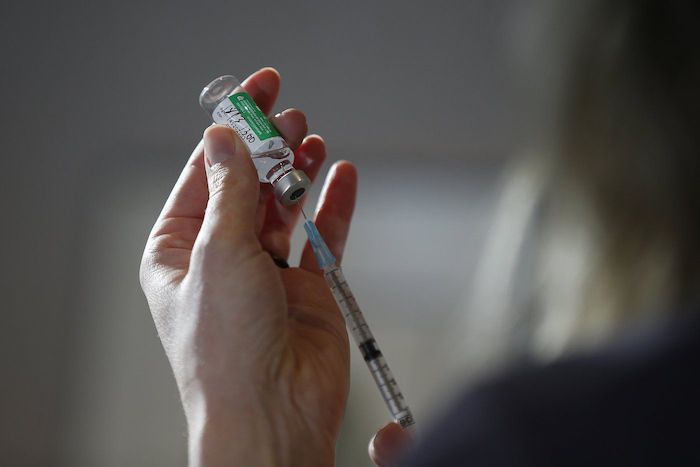
From the Brownstone Institute
” the company skewed the public debate in order to induce Americans to take its shots. The efforts stripped us of the right to informed consent, deceiving us on purported benefits while hiding established risks “
Would 92% of American adults have gotten a Covid shot had they known the “vaccines” only offered a 0.85% reduction in risk? Would young men have taken the jab if they had known it did not prevent transmission?
Americans came to understand that the media campaigns supporting the shots were fraudulent. The touted benefits – preventing infection and transmission – were lies. In response, fewer than one in five Americans elected to receive “boosters” despite multi-billion dollar propaganda campaigns.
Texas Attorney General Ken Paxton has now brought a suit to bring accountability for the fraud that resulted in record profits for the pharmaceutical industry. Paxton filed a complaint alleging that Pfizer misrepresented Covid vaccine efficacy and “conspired to censor public discourse” in violation of Texas’s Deceptive Trade Practices Act (DTPA).
While Big Pharma enjoys immense government-provided insulation from legal liability for vaccine injuries, it cannot lie to promote those products.
Paxton alleges that the $75 billion Pfizer has raked in through sales of Covid vaccines were the “direct and proximate result” of the company’s deceit.
The DTPA requires Paxton prove two questions to succeed in his case. First, he must establish that the company lied or failed to disclose known information concerning its Covid vaccine. Second, he must prove that the company’s fraud was designed to promote sales of the shots.
Brownstone previously analyzed the applicability of the DTPA against Moderna. Now, Paxton’s lawsuit threatens Pfizer with fines of $10 million as well as awards of “restitution, damages, or civil penalties.”
Paxton’s case argues that Pfizer deceived the public on three issues: (1) the efficacy of the vaccine; (2) whether the shots reduced the risk of transmission; and (3) the company’s efforts to “censor[] persons who threatened to disseminate the truth.”
In each instance, the company skewed the public debate in order to induce Americans to take its shots. The efforts stripped us of the right to informed consent, deceiving us on purported benefits while hiding established risks.
Efficacy
First, Paxton targets the now-familiar falsehoods that the company, led by CEO Albert Bourla, touted, including that the shots had “95% efficacy” and worked against mutations of the virus.
Paxton’s critiques do not require the benefit of hindsight. Pfizer’s own data showed that the vaccine was merely 0.85% effective in reducing the likelihood that an individual would contract Covid (known as absolute risk reduction). Put differently, Pfizer’s clinical data showed that “preventing one COVID-19 case required vaccinating 119.”
Despite this unconvincing data, Bourla claimed there was “initial evidence of our vaccine’s ability to prevent Covid-19.” Bourla later said that the shots had “100%” efficacy rates against mutations of the virus, including the Delta variant. Not only was this a lie, Pfizer never tested the shots against the variants. Still, in May 2021 he baselessly claimed that “no variant identified so far…escapes the protection of our vaccine.”
Three months later, the company issued a press release saying that boosters would “preserve and even exceed the high levels of protection against…relevant variants.” Shortly thereafter, the United States exercised its option to purchase 500 million more doses of Pfizer’s Covid vaccines.
These lies clearly and directly induced Americans to take products with illusory benefits. The claims were fabricated, and they led to billions of dollars in windfalls for Bourla and Pfizer.
Transmission
Pfizer’s marketing relied on convincing healthy young adults and teenagers to get shots despite the negligible risk that Covid posed to them. Bourla used transmission to launch a moral blackmail campaign. He told teenagers that they should get the shots to “protect…their loved ones.” He later tweeted, “widespread vaccination is a critical tool to help stop transmission.”
Under oath, company officials later admitted that they had never tested whether the vaccines reduced transmission.
In October 2022, Pfizer spokeswoman Janine Small appeared at a European Parliament hearing. “Was the Pfizer Covid vaccine tested on stopping transmission of the virus before it entered the market?” asked Dutch MEP Rob Roos. “No!” Small responded emphatically. “We had to really move at the speed of science to really understand what is taking place in the market; and from that point of view, we had to do everything at risk.”
Under the DTPA, Paxton must prove that the company misrepresented information regarding the vaccine in an effort to promote sales of its products. With the vast majority of Americans under 70 facing zero substantial risk from Covid infection, the lies regarding transmission were critical to expand the customer base.
This deception underpinned the mandates in 2021 as government and corporate officials insisted that vaccination was necessary to keep healthy adults’ coworkers and neighbors safe. By December 2021, Pfizer’s stock price had doubled from the onset of the pandemic in February 2020.
Censorship
As Pfizer committed to deceiving the public, it had to ensure that journalists would not uncover its corporate misdeeds. Paxton’s suit outlines how the company “sought to intimidate and silence…journalist Alex Berenson.”
As Berenson reported on the efficacy, or lack thereof, of mRNA “vaccines,” Pfizer Board Member Dr. Scott Gottlieb colluded with Twitter to silence his reporting. In August 2021, Berenson tweeted that Pfizer’s vaccine “doesn’t stop infection…[o]r transmission,” and had a“limited window of efficacy.” Despite the veracity of these statements, Gottlieb wrote to Twitter officials encouraging them to ban Berenson’s heresy.
Hours later, Berenson received a permanent ban (he was later reinstated following a lawsuit). Now, Pfizer CEO Albert Bourla is a defendant in Berenson’s case against the Biden Administration, which accuses White House officials of colluding with private actors in Big Tech and Big Pharma to usurp Berenson’s First Amendment rights.
Paxton’s case also outlines how Pfizer worked to silence scientists who discussed the benefits of natural immunity, calling the rhetoric “corrosive” to the public’s confidence in their products. The aim was simple: shield Americans from the truth so that they would continue to get the product.
A Rare Opportunity to Strike Back
To this point, “victories” against the hegemon that emerged in 2020 have been defensive in nature. Groups have fended off vaccine mandates, states have resisted calls for renewed lockdowns, and journalists have begun to expose the corruption that shattered Western civilization.
These efforts, though important, have failed to bring accountability against those who usurped our civil liberties and pillaged the national treasury. Paxton’s suit strikes at the heart of the corruption behind the Covid regime: how their success required mass deception and their profits depended on lies.
Though $10 million in fines is little compared to the $75 billion in revenue that Pfizer raked in from vaccines alone, the suit signifies that the resistance is at last on the offensive.
Big Pharma sees this is a grave threat, and its lobbying forces led a failed impeachment effort against Paxton this fall. They threw him out of his office, and disabled his ability to do his job that the voters sent him to do. Turning up nothing, the legislature rejected the entire drama. Now he is back and working and this is the result: accountability at last.
The steep drop in demand for Covid shots reveals how Pfizer depended upon fraud to promote their most lucrative product. Once Americans knew the truth, demand dropped by over 75%.
Now, Paxton’s suit brings that fraud to trial.
Brownstone Institute
If the President in the White House can’t make changes, who’s in charge?
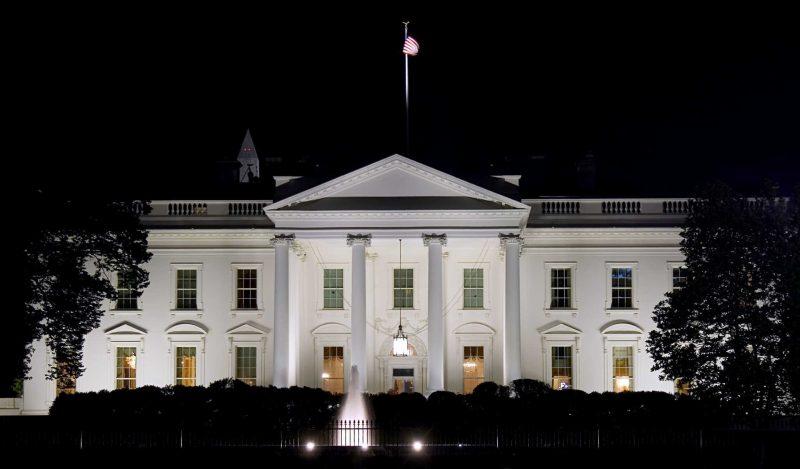
From the Brownstone Institute
By
Who Controls the Administrative State?
President Trump on March 20, 2025, ordered the following: “The Secretary of Education shall, to the maximum extent appropriate and permitted by law, take all necessary steps to facilitate the closure of the Department of Education.”
That is interesting language: to “take all necessary steps to facilitate the closure” is not the same as closing it. And what is “permitted by law” is precisely what is in dispute.
It is meant to feel like abolition, and the media reported it as such, but it is not even close. This is not Trump’s fault. The supposed authoritarian has his hands tied in many directions, even over agencies he supposedly controls, the actions of which he must ultimately bear responsibility.
The Department of Education is an executive agency, created by Congress in 1979. Trump wants it gone forever. So do his voters. Can he do that? No but can he destaff the place and scatter its functions? No one knows for sure. Who decides? Presumably the highest court, eventually.
How this is decided – whether the president is actually in charge or really just a symbolic figure like the King of Sweden – affects not just this one destructive agency but hundreds more. Indeed, the fate of the whole of freedom and functioning of constitutional republics may depend on the answer.
All burning questions of politics today turn on who or what is in charge of the administrative state. No one knows the answer and this is for a reason. The main functioning of the modern state falls to a beast that does not exist in the Constitution.
The public mind has never had great love for bureaucracies. Consistent with Max Weber’s worry, they have put society in an impenetrable “iron cage” built of bloodless rationalism, needling edicts, corporatist corruption, and never-ending empire-building checked by neither budgetary restraint nor plebiscite.
Today’s full consciousness of the authority and ubiquity of the administrative state is rather new. The term itself is a mouthful and doesn’t come close to describing the breadth and depth of the problem, including its root systems and retail branches. The new awareness is that neither the people nor their elected representatives are really in charge of the regime under which we live, which betrays the whole political promise of the Enlightenment.
This dawning awareness is probably 100 years late. The machinery of what is popularly known as the “deep state” – I’ve argued there are deep, middle, and shallow layers – has been growing in the US since the inception of the civil service in 1883 and thoroughly entrenched over two world wars and countless crises at home and abroad.
The edifice of compulsion and control is indescribably huge. No one can agree precisely on how many agencies there are or how many people work for them, much less how many institutions and individuals work on contract for them, either directly or indirectly. And that is just the public face; the subterranean branch is far more elusive.
The revolt against them all came with the Covid controls, when everyone was surrounded on all sides by forces outside our purview and about which the politicians knew not much at all. Then those same institutional forces appear to be involved in overturning the rule of a very popular politician whom they tried to stop from gaining a second term.
The combination of this series of outrages – what Jefferson in his Declaration called “a long train of abuses and usurpations, pursuing invariably the same Object” – has led to a torrent of awareness. This has translated into political action.
A distinguishing mark of Trump’s second term has been an optically concerted effort, at least initially, to take control of and then curb administrative state power, more so than any executive in living memory. At every step in these efforts, there has been some barrier, even many on all sides.
There are at least 100 legal challenges making their way through courts. District judges are striking down Trump’s ability to fire workers, redirect funding, curb responsibilities, and otherwise change the way they do business.
Even the signature early achievement of DOGE – the shuttering of USAID – has been stopped by a judge with an attempt to reverse it. A judge has even dared tell the Trump administration who it can and cannot hire at USAID.
Not a day goes by when the New York Times does not manufacture some maudlin defense of the put-upon minions of the tax-funded managerial class. In this worldview, the agencies are always right, whereas any elected or appointed person seeking to rein them in or terminate them is attacking the public interest.
After all, as it turns out, legacy media and the administrative state have worked together for at least a century to cobble together what was conventionally called “the news.” Where would the NYT or the whole legacy media otherwise be?
So ferocious has been the pushback against even the paltry successes and often cosmetic reforms of MAGA/MAHA/DOGE that vigilantes have engaged in terrorism against Teslas and their owners. Not even returning astronauts from being “lost in space” has redeemed Elon Musk from the wrath of the ruling class. Hating him and his companies is the “new thing” for NPCs, on a long list that began with masks, shots, supporting Ukraine, and surgical rights for gender dysphoria.
What is really at stake, more so than any issue in American life (and this applies to states around the world) – far more than any ideological battles over left and right, red and blue, or race and class – is the status, power, and security of the administrative state itself and all its works.
We claim to support democracy yet all the while, empires of command-and-control have arisen among us. The victims have only one mechanism available to fight back: the vote. Can that work? We do not yet know. This question will likely be decided by the highest court.
All of which is awkward. It is impossible to get around this US government organizational chart. All but a handful of agencies live under the category of the executive branch. Article 2, Section 1, says: “The executive Power shall be vested in a President of the United States of America.”

Does the president control the whole of the executive branch in a meaningful way? One would think so. It’s impossible to understand how it could be otherwise. The chief executive is…the chief executive. He is held responsible for what these agencies do – we certainly blasted away at the Trump administration in the first term for everything that happened under his watch. In that case, and if the buck really does stop at the Oval Office desk, the president must have some modicum of control beyond the ability to tag a marionette to get the best parking spot at the agency.
What is the alternative to presidential oversight and management of the agencies listed in this branch of government? They run themselves? That claim means nothing in practice.
For an agency to be deemed “independent” turns out to mean codependency with the industries regulated, subsidized, penalized, or otherwise impacted by its operations. HUD does housing development, FDA does pharmaceuticals, DOA does farming, DOL does unions, DOE does oil and turbines, DOD does tanks and bombs, FAA does airlines, and so on It goes forever.
That’s what “independence” means in practice: total acquiescence to industrial cartels, trade groups, and behind-the-scenes systems of payola, blackmail, and graft, while the powerless among the people live with the results. This much we have learned and cannot unlearn.
That is precisely the problem that cries out for a solution. The solution of elections seems reasonable only if the people we elected actually have the authority over the thing they seek to reform.
There are criticisms of the idea of executive control of executive agencies, which is really nothing other than the system the Founders established.
First, conceding more power to the president raises fears that he will behave like a dictator, a fear that is legitimate. Partisan supporters of Trump won’t be happy when the precedent is cited to reverse Trump’s political priorities and the agencies turn on red-state voters in revenge.
That problem is solved by dismantling agency power itself, which, interestingly, is mostly what Trump’s executive orders have sought to achieve and which the courts and media have worked to stop.
Second, one worries about the return of the “spoils system,” the supposedly corrupt system by which the president hands out favors to friends in the form of emoluments, a practice the establishment of the civil service was supposed to stop.
In reality, the new system of the early 20th century fixed nothing but only added another layer, a permanent ruling class to participate more fully in a new type of spoils system that operated now under the cloak of science and efficiency.
Honestly, can we really compare the petty thievery of Tammany Hall to the global depredations of USAID?
Third, it is said that presidential control of agencies threatens to erode checks and balances. The obvious response is the organizational chart above. That happened long ago as Congress created and funded agency after agency from the Wilson to the Biden administration, all under executive control.
Congress perhaps wanted the administrative state to be an unannounced and unaccountable fourth branch, but nothing in the founding documents created or imagined such a thing.
If you are worried about being dominated and destroyed by a ravenous beast, the best approach is not to adopt one, feed it to adulthood, train it to attack and eat people, and then unleash it.
The Covid years taught us to fear the power of the agencies and those who control them not just nationally but globally. The question now is two-fold: what can be done about it and how to get from here to there?
Trump’s executive order on the Department of Education illustrates the point precisely. His administration is so uncertain of what it does and can control, even of agencies that are wholly executive agencies, listed clearly under the heading of executive agencies, that it has to dodge and weave practical and legal barriers and land mines, even in its own supposed executive pronouncements, even to urge what might amount to be minor reforms.
Whoever is in charge of such a system, it is clearly not the people.
Brownstone Institute
The New Enthusiasm for Slaughter
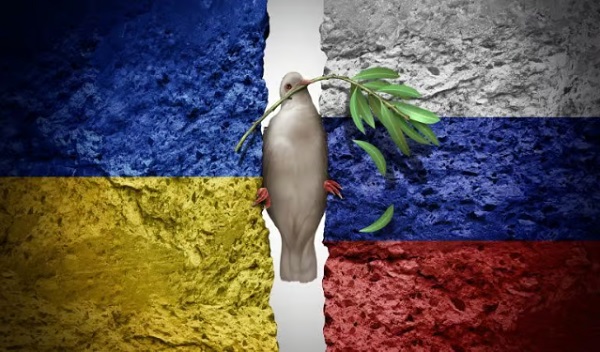
From the Brownstone Institute
By
What War Means
My mother once told me how my father still woke up screaming in the night years after I was born, decades after the Second World War (WWII) ended. I had not known – probably like most children of those who fought. For him, it was visions of his friends going down in burning aircraft – other bombers of his squadron off north Australia – and to be helpless, watching, as they burnt and fell. Few born after that war could really appreciate what their fathers, and mothers, went through.
Early in the movie Saving Private Ryan, there is an extended D-Day scene of the front doors of the landing craft opening on the Normandy beaches, and all those inside being torn apart by bullets. It happens to one landing craft after another. Bankers, teachers, students, and farmers being ripped in pieces and their guts spilling out whilst they, still alive, call for help that cannot come. That is what happens when a machine gun opens up through the open door of a landing craft, or an armored personnel carrier, of a group sent to secure a tree line.
It is what a lot of politicians are calling for now.
People with shares in the arms industry become a little richer every time one of those shells is fired and has to be replaced. They gain financially, and often politically, from bodies being ripped open. This is what we call war. It is increasingly popular as a political strategy, though generally for others and the children of others.
Of course, the effects of war go beyond the dismembering and lonely death of many of those fighting. Massacres of civilians and rape of women can become common, as brutality enables humans to be seen as unwanted objects. If all this sounds abstract, apply it to your loved ones and think what that would mean.
I believe there can be just wars, and this is not a discussion about the evil of war, or who is right or wrong in current wars. Just a recognition that war is something worth avoiding, despite its apparent popularity amongst many leaders and our media.
The EU Reverses Its Focus
When the Brexit vote determined that Britain would leave the European Union (EU), I, like many, despaired. We should learn from history, and the EU’s existence had coincided with the longest period of peace between Western European States in well over 2,000 years.
Leaving the EU seemed to be risking this success. Surely, it is better to work together, to talk and cooperate with old enemies, in a constructive way? The media, and the political left, center, and much of the right seemed at that time, all of nine years ago, to agree. Or so the story went.
We now face a new reality as the EU leadership scrambles to justify continuing a war. Not only continuing, but they had been staunchly refusing to even countenance discussion on ending the killing. It has taken a new regime from across the ocean, a subject of European mockery, to do that.
In Europe, and in parts of American politics, something is going on that is very different from the question of whether current wars are just or unjust. It is an apparent belief that advocacy for continued war is virtuous. Talking to leaders of an opposing country in a war that is killing Europeans by the tens of thousands has been seen as traitorous. Those proposing to view the issues from both sides are somehow “far right.”
The EU, once intended as an instrument to end war, now has a European rearmament strategy. The irony seems lost on both its leaders and its media. Arguments such as “peace through strength” are pathetic when accompanied by censorship, propaganda, and a refusal to talk.
As US Vice-President JD Vance recently asked European leaders, what values are they actually defending?
Europe’s Need for Outside Help
A lack of experience of war does not seem sufficient to explain the current enthusiasm to continue them. Architects of WWII in Europe had certainly experienced the carnage of the First World War. Apart from the financial incentives that human slaughter can bring, there are also political ideologies that enable the mass death of others to be turned into an abstract and even positive idea.
Those dying must be seen to be from a different class, of different intelligence, or otherwise justifiable fodder to feed the cause of the Rules-Based Order or whatever other slogan can distinguish an ‘us’ from a ‘them’…While the current incarnation seems more of a class thing than a geographical or nationalistic one, European history is ripe with variations of both.
Europe appears to be back where it used to be, the aristocracy burning the serfs when not visiting each other’s clubs. Shallow thinking has the day, and the media have adapted themselves accordingly. Democracy means ensuring that only the right people get into power.
Dismembered European corpses and terrorized children are just part of maintaining this ideological purity. War is acceptable once more. Let’s hope such leaders and ideologies can be sidelined by those beyond Europe who are willing to give peace a chance.
There is no virtue in the promotion of mass death. Europe, with its leadership, will benefit from outside help and basic education. It would benefit even further from leadership that values the lives of its people.
-

 Business2 days ago
Business2 days agoChinese firm unveils palm-based biometric ID payments, sparking fresh privacy concerns
-

 2025 Federal Election2 days ago
2025 Federal Election2 days agoConservatives promise to ban firing of Canadian federal workers based on COVID jab status
-

 Business1 day ago
Business1 day agoIs Government Inflation Reporting Accurate?
-

 2025 Federal Election1 day ago
2025 Federal Election1 day agoCarney’s Hidden Climate Finance Agenda
-
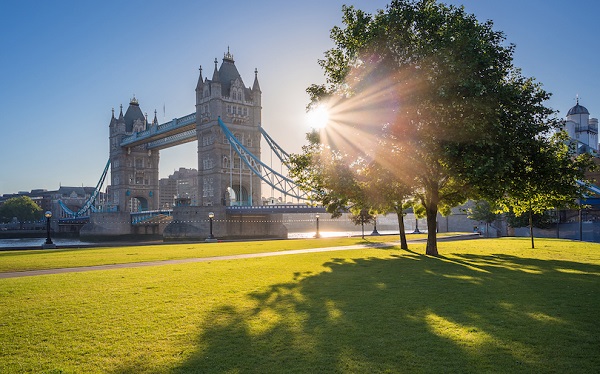
 Environment2 days ago
Environment2 days agoExperiments to dim sunlight will soon be approved by UK government: report
-
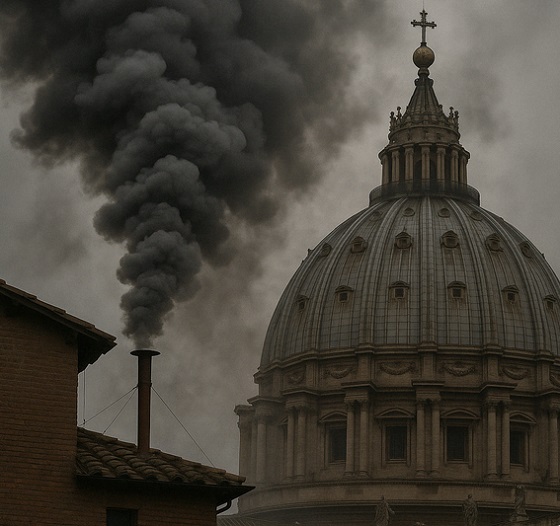
 International2 days ago
International2 days agoPope Francis Got Canadian History Wrong
-

 2025 Federal Election1 day ago
2025 Federal Election1 day agoWhen it comes to pipelines, Carney’s words flow both ways
-

 2025 Federal Election1 day ago
2025 Federal Election1 day agoStudy links B.C.’s drug policies to more overdoses, but researchers urge caution









